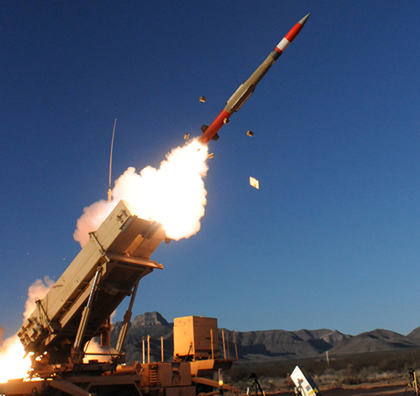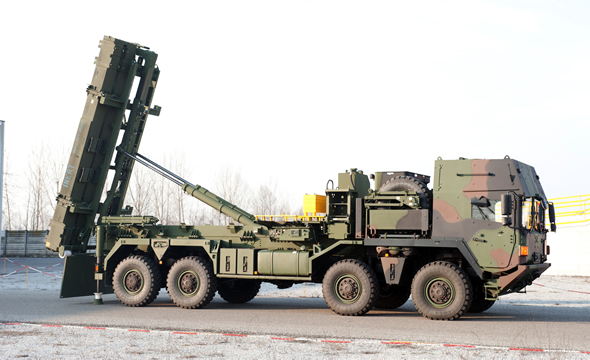The PAC-3 Missile Segment Enhancement (MSE) performed a successful intercept test today, the first time it was fired from the Medium Extended Air Defense System (MEADS) MEADS lightweight launcher and employed the MEADS system battle manager. The PAC3 MSE interceptor is the certified missile round for the NATO MEADS air defense system. The first test firing of PAC-3 MSE missile was conducted in February 2010.

Two additional intercept flight tests are scheduled to commence in the next two years, including intercepts of an air-breathing threat and a tactical ballistic missile target, preceded by a sensor characterization test. The test series will also demonstrate engage-on-remote, plug-and-fight capabilities, netted/distributed functionality and interoperability through Link 16.
According to MEADS International President Dave Berganini, the team remains focused on executing the flight tests approved by the National Armaments Directors on time and on budget. “Our goal is to demonstrate the advanced capabilities of MEADS, including its open, network-centric architecture, non-proprietary software and plug-and-fight capabilities.” Berganini added,
The test scenario simulated a challenging ‘over-the-shoulder’ launch scheme, where the launcher had to fire the missile against a target attacking from behind. It required a unique sideways maneuver, demonstrating a 360-degree capability. The missile executed a planned self-destruct sequence at the end of the mission after successfully engaging the simulated threat. This 360-degree defensive capability, employing the advanced MEADS radars and MSE missile, extends the systems’ defensive footprint by up to eight times the coverage area employing fewer system assets and significantly reduces demand for deployed personnel and equipment, which reduces demand for airlift.
The test followed a successful simulated engagement against targets representing realistic missile threats, performed earlier this week as part of the ‘plug-and-fight’ testing. This simulation tasked the systems’ battle manager ability to configure flexible combinations of sensors and launchers, organized into single or multiple air and missile defense battle elements employing unique ‘plug-and-fight’ capability. This architecture enables sensors, shooters and Tactical Operations Centers (TOC) to act as nodes on the network, with the battle manager enabling the unit commander to dynamically add or subtract these elements as the situation dictates, without shutting the system down.
The test series demonstrated successful integration of BMC4I hardware and software by completing essential system functions including attaching and detaching the launcher from the MEADS plug-and-fight network; configuring and initializing the MEADS launcher and simulated sensors; performing track management functions, threat assessment and identification; and transmitting a valid launch command to the launcher. These tests represent an important step toward the integration and test events to be conducted at Pratica di Mare, Italy.
The tactically mobile lightweight MEADS launcher is easily transportable, and is capable of rapid reload. It carries up to eight Patriot Advanced Capability-3 (PAC-3) Missile Segment Enhancement (MSE) Missiles and achieves launch readiness in minimum time.
MEADS International, a multinational joint venture headquartered in Orlando, Fla., is the prime contractor for the MEADS system. Major subcontractors and joint venture partners are MBDA in Italy and Germany, and Lockheed Martin in the United States.
While two of the leading participants in the program, Germany and the U.S. have already withdrawn from acquisition and the next development phase, the National Armaments Directors of Germany, Italy and the United States have approved funding for the continued development, funding two flight intercept tests of the missile, launcher missile and sensor characterization tests, before the MEADS Design and Development contract ends in 2014.

















